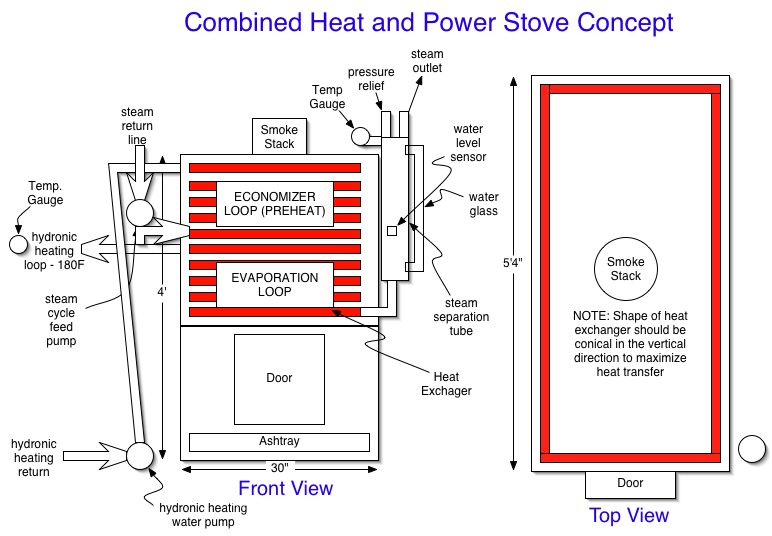CHP Stove Heat Exchanger: Difference between revisions
Jump to navigation
Jump to search
No edit summary |
No edit summary |
||
| (3 intermediate revisions by 3 users not shown) | |||
| Line 1: | Line 1: | ||
{{Category=Steam Engine}} | |||
=Design= | =Design= | ||
| Line 6: | Line 8: | ||
[[Image:CHPstove.jpg]] | [[Image:CHPstove.jpg]] | ||
=Questions= | =Questions= | ||
Do you think if I have a 5x2 foot heat exchange coil as shown, in rectangular geometry and chimney on top - that I would get effective heat extraction from the fire? Should there be more than 10 layers, 14 feet each, for a total of 140 feet of pipe? I'm thinking 3/4" tubing. That still gives me about 3 gallons of inside tube volume. Would that pose explosion risk, or are monotube coils like that safe at 300 PSI? | *Do you think if I have a 5x2 foot heat exchange coil as shown, in rectangular geometry and chimney on top - that I would get effective heat extraction from the fire? | ||
*Should there be more than 10 layers, 14 feet each, for a total of 140 feet of pipe? | |||
*I'm thinking 3/4" tubing. That still gives me about 3 gallons of inside tube volume. Would that pose explosion risk, or are monotube coils like that safe at 300 PSI? | |||
[[Category: | [[Category:Steam Engine]] | ||
[[Category:Steam Generator]] | |||
Latest revision as of 18:48, 2 May 2011
Main > Energy > Steam Engine
Design
Concept of a CHP stove for running with a steam engine:
Questions
- Do you think if I have a 5x2 foot heat exchange coil as shown, in rectangular geometry and chimney on top - that I would get effective heat extraction from the fire?
- Should there be more than 10 layers, 14 feet each, for a total of 140 feet of pipe?
- I'm thinking 3/4" tubing. That still gives me about 3 gallons of inside tube volume. Would that pose explosion risk, or are monotube coils like that safe at 300 PSI?
